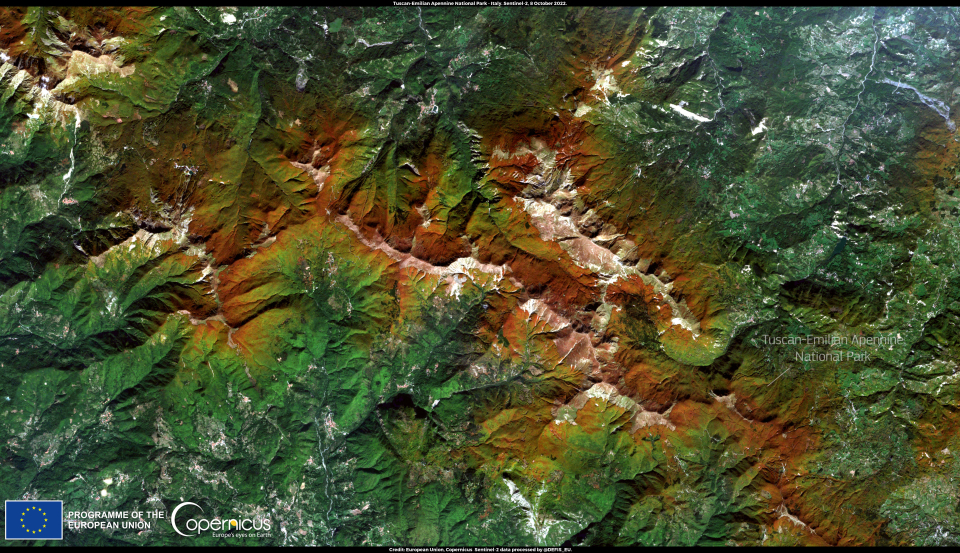Published on 11 October 2022
Each year, autumn foliage transforms mountainous landscapes in various areas of the world as a result of the senescence – or ageing – process of the leaves that paints forests in red, orange, yellow and brown tones.
One of such landscape in Europe is the Tuscan-Emilian Apennine National Park, a UNESCO biosphere reserve located in central Italy. The site is home to a significant biodiversity, as it contains more than 70% of the total number of species present in Italy, including 122 bird species.

This image, acquired on 8 October 2022 by one of the Copernicus Sentinel-2 satellites, shows the beautiful and warm colours of the foliage in the Tuscan-Emilian Apennine National Park.
Click here to view this image at full resolution
The Copernicus Sentinel-2 satellites make it possible to extract comprehensive information on the state of natural areas with dense vegetation, as well as contribute to the monitoring and preservation of biodiversity around the world.